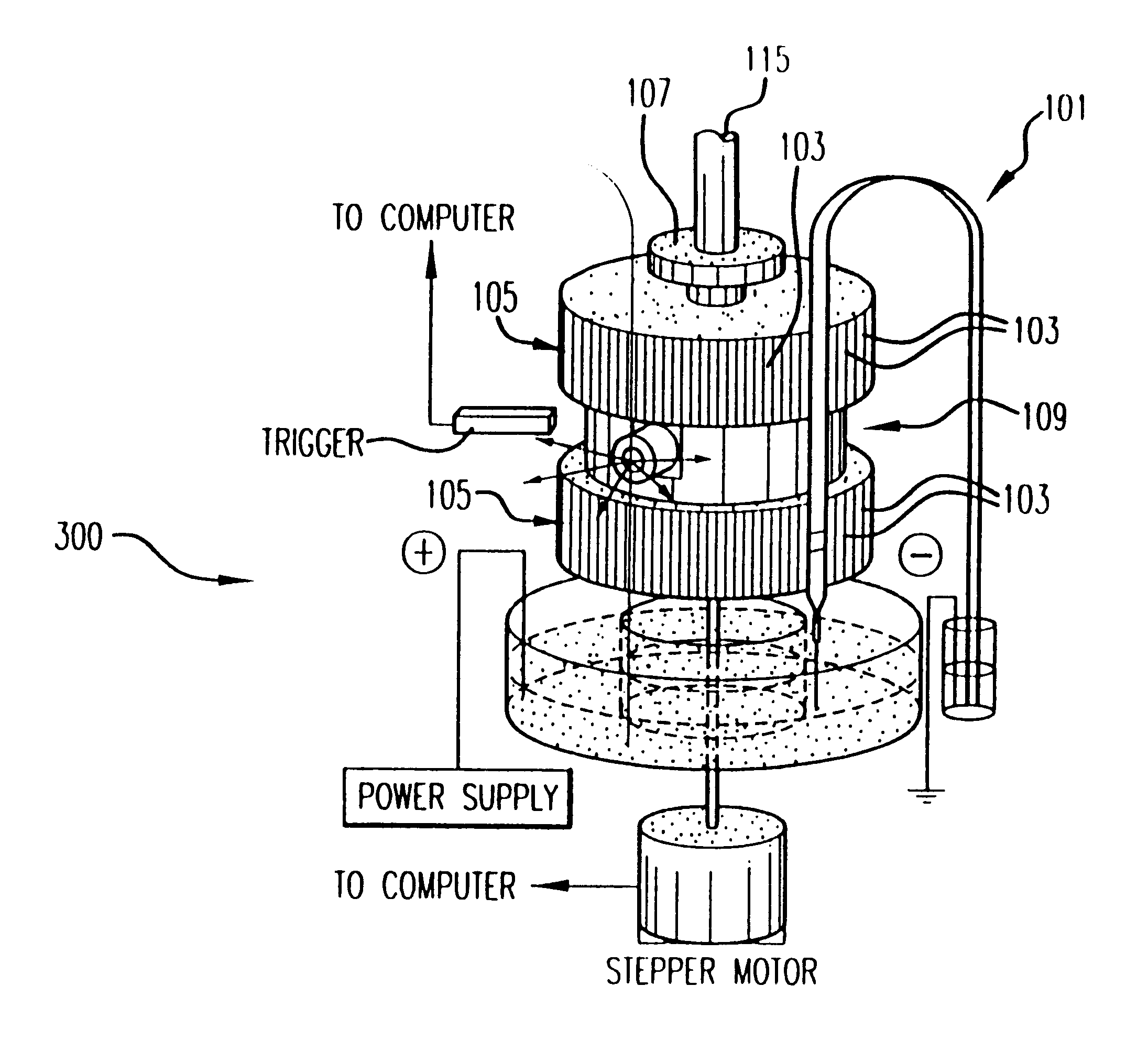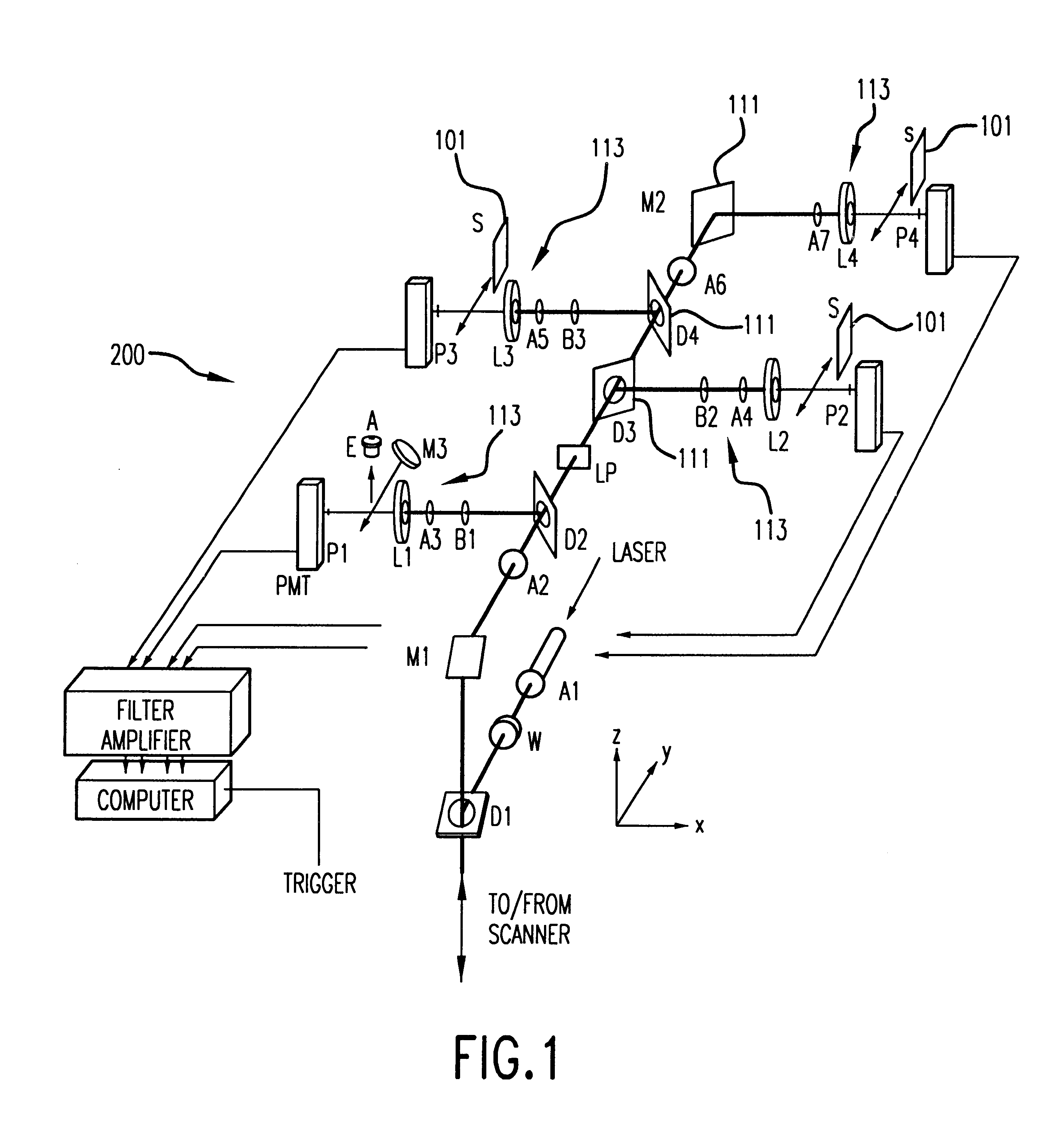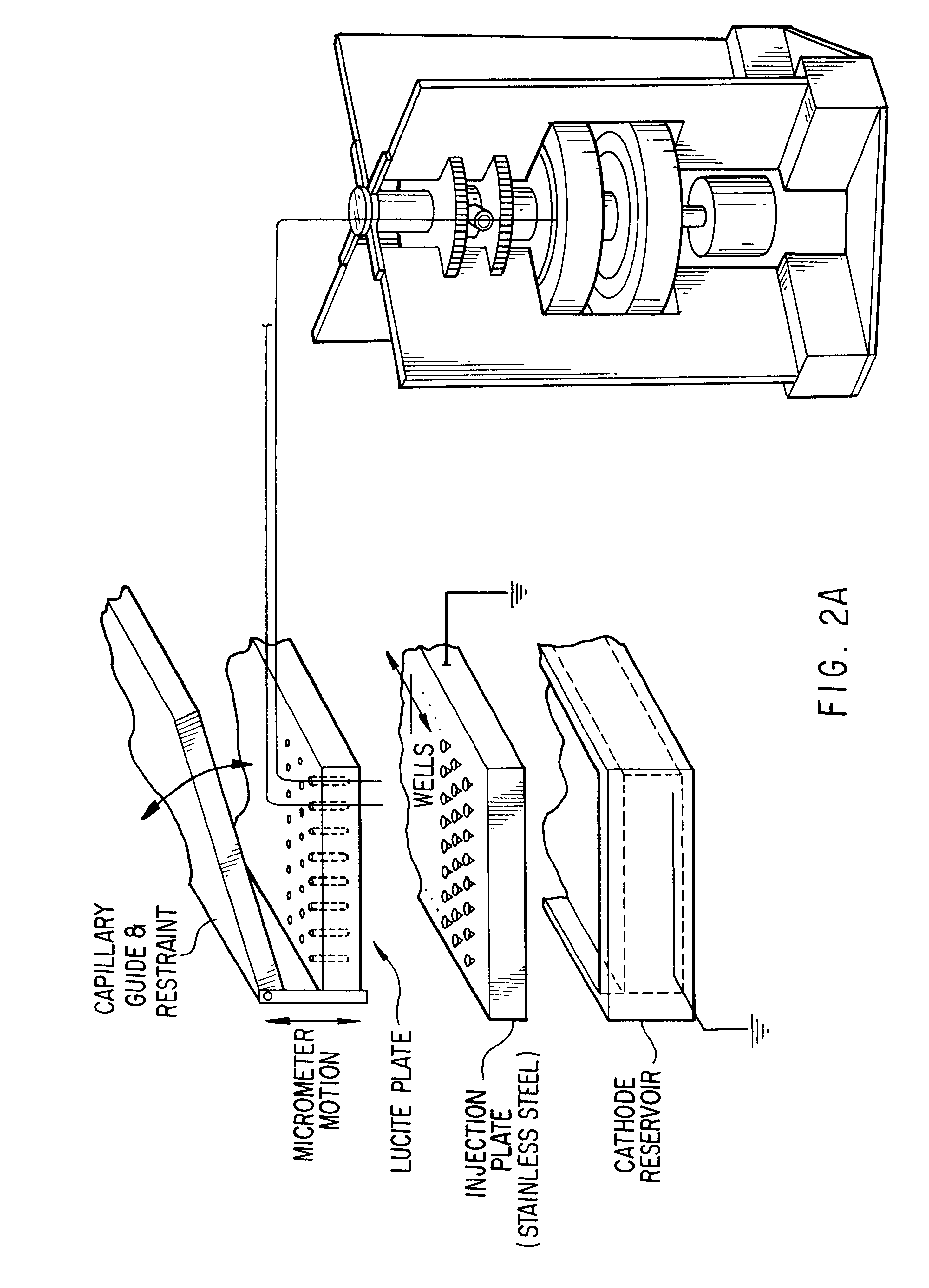Capillary array electrophoresis scanner
- Summary
- Abstract
- Description
- Claims
- Application Information
AI Technical Summary
Benefits of technology
Problems solved by technology
Method used
Image
Examples
example 2
Positional Accuracy of the Scanner Using 33 Capillaries Using the equipment and conditions employed in Example 1, a similar run was made using 33 capillaries. Similar data was obtained.
example 3
128-Capillary Sequencing Runs
The results of 128-capillary sequencing runs detected with the high-capacity scanner of the present invention are shown in FIG. 6. FIG. 6 is an image of M13 DNA sequencing traces performed on the 128-capillary array. This image shows that high quality sequencing runs can be readily obtained on large numbers of capillaries in parallel. Each of these separations can be called to over 500 bases.
The Monster Capillary Array Electrophoresis scanner, shown generally at 100, was designed to measure four-color electropherograms from over a thousand capillary electrophoretic separations in parallel. The system consists of a two-dimensional confocal rotary scanner 300 and a four-color detection unit 200.
Referring now to FIG. 2D, a schematic diagram of the rotary scanner is offered for consideration. According to a preferred embodiment illustrated herein, for example, two hundred micron diameter capillaries 101 are mounted in machined grooves 103 (0.005" depth with ...
PUM
 Login to View More
Login to View More Abstract
Description
Claims
Application Information
 Login to View More
Login to View More - R&D
- Intellectual Property
- Life Sciences
- Materials
- Tech Scout
- Unparalleled Data Quality
- Higher Quality Content
- 60% Fewer Hallucinations
Browse by: Latest US Patents, China's latest patents, Technical Efficacy Thesaurus, Application Domain, Technology Topic, Popular Technical Reports.
© 2025 PatSnap. All rights reserved.Legal|Privacy policy|Modern Slavery Act Transparency Statement|Sitemap|About US| Contact US: help@patsnap.com



